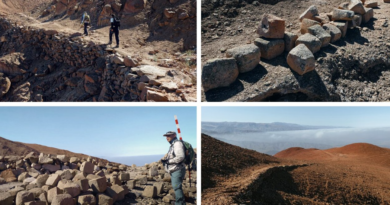Insights into Ancient Diets through Bronze Age Metal Cauldrons
For an extended period, researchers have been deciphering the functions of ancient tools by relying on written records and contextual hints from their creators. Nonetheless, understanding historical dietary habits and food preparation techniques has often required educated guesswork due to limited direct evidence.
In a recent study published in the journal iScience, a novel approach was taken to shed light on past diets. The research focused on protein remnants recovered from antique cooking cauldrons, revealing intriguing information about the food consumed by people during the Maykop era (3700–2900 BC) in the Caucasus region.
Led by Shevan Wilkin from the University of Zurich, the study marks a significant step in uncovering culinary practices of ancient times. Wilkin expressed excitement about the findings, noting that the preserved proteins offer a window into the feasts of bygone eras. The study’s findings indicate that the cauldrons were used for preparing large communal meals, hinting at a social and collective dining experience.
In the past, scientists have tapped into ancient pottery fats and proteins from dental calculus to gain insights into past diets. In this study, the integration of protein analysis with archaeological knowledge provided nuanced insights into the specific cuisines crafted using these cauldrons. Metal alloys, known for their antimicrobial properties, played a crucial role in the well-preserved protein remains on the cauldrons. Unlike ceramic and stone surfaces, metal alloys resist the protein-degrading actions of soil microorganisms.
The research team collected residue samples from seven cauldrons found at burial sites across the Caucasus region. This geographical area spans from Southwestern Russia to Turkey, encompassing modern-day nations like Georgia, Azerbaijan, and Armenia. The proteins recovered from the residues originated from blood, muscle tissue, and milk. Notably, the presence of specific proteins hinted at the cooking of deer or bovine meats in the cauldrons, while the detection of milk proteins indicated their use in dairy preparation.
Beyond the culinary insights, these cauldrons bear signs of extensive usage and skilled repairs, suggesting their significance as valuable artifacts, potentially emblematic of wealth or social status.
The researchers are eager to expand their exploration, aiming to compare residues from various types of vessels to gain a more comprehensive understanding of ancient culinary practices. This endeavor holds the promise of unraveling regional and temporal differences in food preparation methods and shedding light on the cultural connections between diverse areas.
By applying this innovative approach, the study opens doors to potential insights from other prehistoric metal artifacts, offering a promising avenue for further exploration. As Wilkin emphasizes, this research marks a significant stride forward, allowing us to delve deeper into our ancient past through the lens of food and culture.




